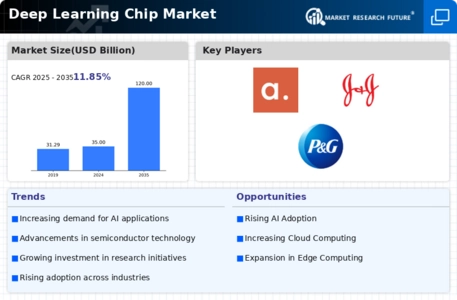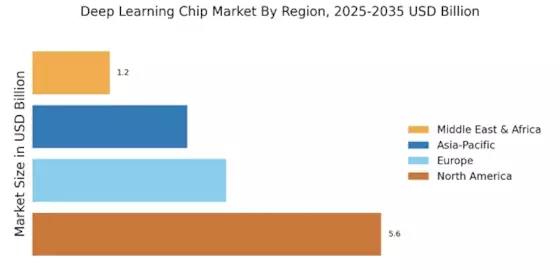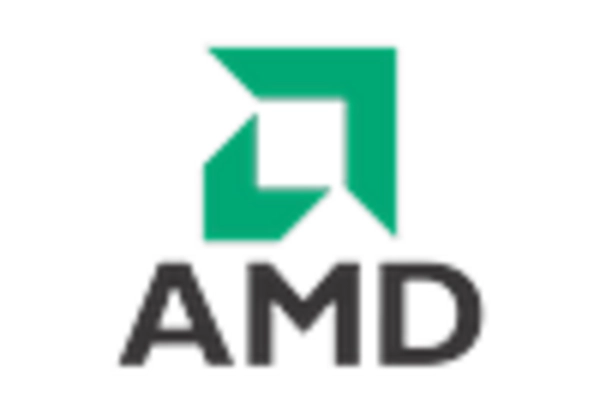Surge in AI Adoption
The increasing adoption of artificial intelligence across various sectors is a primary driver for the Deep Learning Chip Market. Organizations are leveraging AI to enhance operational efficiency, improve customer experiences, and drive innovation. According to recent estimates, the AI market is projected to reach a valuation of over 500 billion dollars by 2024, which inherently boosts the demand for specialized hardware like deep learning chips. These chips are essential for processing vast amounts of data and executing complex algorithms, thus facilitating the deployment of AI applications. As businesses recognize the competitive advantage offered by AI, investments in deep learning technologies are likely to escalate, further propelling the growth of the Deep Learning Chip Market.
Expansion of Cloud Computing Services
The expansion of cloud computing services is significantly impacting the Deep Learning Chip Market. As more businesses migrate to cloud platforms, the need for powerful processing capabilities increases. Cloud service providers are investing heavily in deep learning infrastructure to support their offerings, which includes the integration of advanced deep learning chips. The cloud computing market is projected to grow to over 800 billion dollars by 2025, indicating a robust demand for the underlying technologies that support these services. This growth is likely to drive the adoption of deep learning chips, as they are essential for handling the computational demands of cloud-based AI applications. Consequently, the Deep Learning Chip Market stands to benefit from this trend as cloud services continue to proliferate.
Advancements in Semiconductor Technology
Technological advancements in semiconductor manufacturing are significantly influencing the Deep Learning Chip Market. Innovations such as smaller process nodes and improved materials are enabling the production of more powerful and efficient chips. For instance, the transition to 7nm and 5nm fabrication processes has allowed for increased transistor density, which enhances performance while reducing power consumption. This is particularly crucial for deep learning applications that require high computational power. The semiconductor industry is expected to grow at a compound annual growth rate of approximately 6% through 2025, indicating a robust environment for the development of deep learning chips. As these advancements continue, they are likely to drive further investment and interest in the Deep Learning Chip Market.
Growing Demand for Real-Time Data Processing
The demand for real-time data processing is rapidly increasing, serving as a catalyst for the Deep Learning Chip Market. Industries such as finance, healthcare, and autonomous vehicles require immediate data analysis to make informed decisions. Deep learning chips are designed to handle large datasets and perform complex computations at high speeds, making them ideal for applications that necessitate real-time processing. The market for real-time analytics is projected to grow significantly, with estimates suggesting it could reach 100 billion dollars by 2025. This trend indicates a strong need for advanced processing capabilities, thereby driving the demand for deep learning chips. As organizations strive to harness the power of data, the Deep Learning Chip Market is poised for substantial growth.
Increased Investment in Research and Development
Investment in research and development within the tech sector is a crucial driver for the Deep Learning Chip Market. Companies are allocating significant resources to innovate and enhance deep learning technologies, which in turn fuels the demand for specialized chips. The global spending on AI research is expected to exceed 100 billion dollars by 2025, reflecting a commitment to advancing deep learning capabilities. This influx of funding is likely to lead to breakthroughs in chip design and functionality, making them more efficient and powerful. As organizations seek to stay competitive, the emphasis on R&D will continue to stimulate growth in the Deep Learning Chip Market, fostering an environment ripe for innovation.

















Leave a Comment